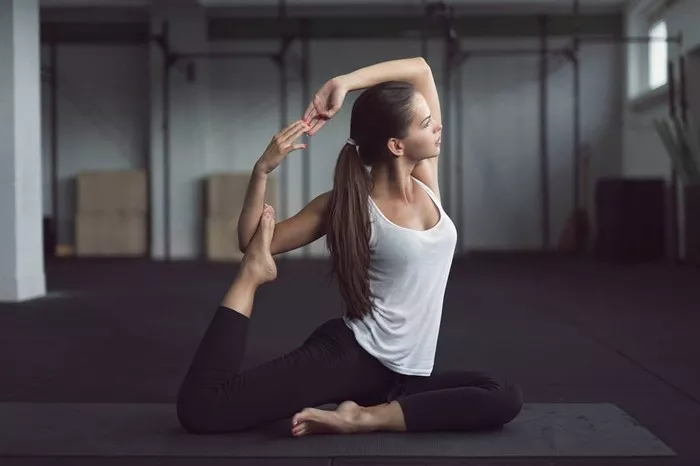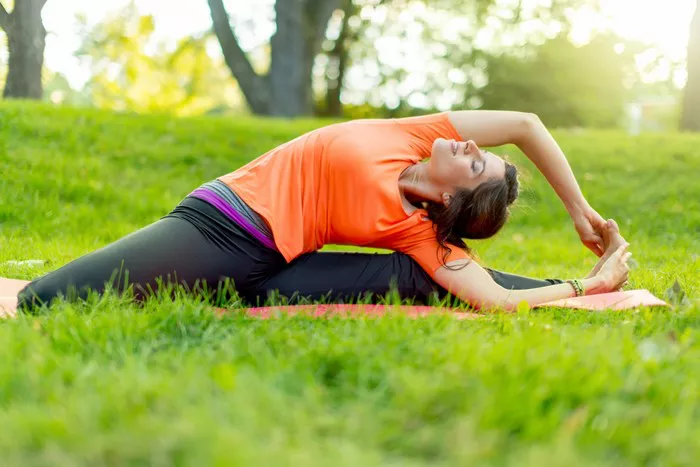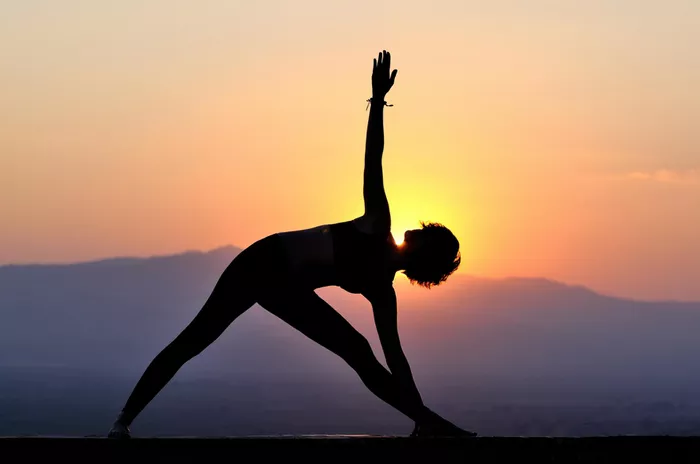Yoga is a dynamic practice that has evolved over thousands of years, offering various styles and approaches to improve physical health, mental clarity, and emotional well-being. Among the most popular yoga practices today is Vinyasa Yoga, a style that emphasizes the synchronization of breath with movement. It has garnered a global following due to its flow-based nature, offering both a cardiovascular workout and a calming mindfulness experience.
But one question that often arises is, “Is it okay to do Vinyasa yoga every day?” While this may seem like a straightforward inquiry, the answer is nuanced, as it depends on several factors such as your individual goals, fitness level, physical condition, and how you approach the practice itself.
In this article, we will explore the various aspects of practicing Vinyasa yoga daily, including its benefits, potential risks, and how to structure a sustainable daily practice that promotes overall health and well-being.
What Is Vinyasa Yoga?
Before delving into whether it’s advisable to practice Vinyasa yoga every day, it’s important to understand what Vinyasa yoga is.
Vinyasa is a Sanskrit term that roughly translates to “connection” or “arranging in a special way.” In the context of yoga, it refers to the fluid movement between poses coordinated with breath. Unlike traditional Hatha yoga, which often involves holding static poses for longer periods, Vinyasa yoga incorporates a continuous flow of movements that link together. This flow is often compared to a moving meditation, where the breath serves as the guide through each transition.
A typical Vinyasa class may begin with Sun Salutations to warm up the body and increase circulation. This is followed by a series of standing poses, balance postures, backbends, seated stretches, and then a cool-down session, usually culminating in a relaxation period (Savasana). The beauty of Vinyasa is that no two classes are ever the same, as instructors have the freedom to design creative sequences that keep the practice fresh and engaging.
Benefits of Vinyasa Yoga
Vinyasa yoga offers a range of benefits for the body, mind, and spirit. Some of these include:
Improved Flexibility and Strength: The diverse poses in Vinyasa yoga work every part of your body, enhancing both flexibility and muscular strength. The dynamic flow of movements challenges the body in various ways, improving joint mobility and muscle tone over time.
Cardiovascular Health: Due to its continuous flow and the incorporation of intense poses such as Warrior sequences and Planks, Vinyasa yoga provides an excellent cardiovascular workout. This can increase your heart rate, improve blood circulation, and enhance overall endurance.
Mental Clarity and Stress Relief: Vinyasa encourages a meditative state by focusing on breath and movement. The practice can help alleviate stress, anxiety, and mental fatigue, leading to better emotional balance and focus.
Improved Balance and Coordination: Many Vinyasa sequences require balancing poses (e.g., Tree Pose, Warrior III), which help improve your coordination, body awareness, and stability over time.
Detoxification: The combination of physical movement and conscious breathwork creates internal heat, which helps to sweat out toxins and purify the body.
Enhanced Mobility: With regular practice, your body becomes more mobile, increasing its ability to move freely and fluidly, both in and out of yoga poses and in daily life.
Given these numerous benefits, it’s understandable why many people wonder if they can practice Vinyasa yoga every day. However, it’s important to consider how your body responds to regular practice and whether such an approach aligns with your personal goals.
Can You Do Vinyasa Yoga Every Day?
The short answer is: Yes, it is possible to practice Vinyasa yoga every day—under certain conditions. The longer answer, however, involves several factors to consider to ensure your practice remains safe and sustainable.
1. Listen to Your Body
First and foremost, one of the core principles of yoga is learning to tune into your own body. This means understanding your limits and respecting your body’s signals. If you choose to practice Vinyasa yoga every day, pay attention to any signs of physical discomfort or strain. Soreness, tightness, or fatigue are normal after a challenging practice, but persistent pain or joint discomfort is not.
If you feel worn out, overly fatigued, or experience aches and pains that don’t subside with rest, it may be an indication that you’re pushing your body too hard. Over time, this could lead to injury or burnout.
A healthy Vinyasa yoga practice involves balancing the intensity of your flow with adequate recovery. It’s essential to incorporate rest days or alternative forms of exercise, such as restorative yoga, meditation, or gentle stretching, to allow your muscles to repair and recharge.
2. Differentiate Between Intensity Levels
Not all Vinyasa classes are created equal. While some classes may be fast-paced, intense, and athletic, others are slower, more mindful, and restorative in nature. The intensity of your Vinyasa practice will significantly affect how well you can do it every day.
High-Intensity Vinyasa: If you’re practicing a high-intensity Vinyasa class that includes strong sequences, long flows, and little rest between poses, doing this every day may be too much for your body to handle in the long term. High-intensity practices can lead to overuse injuries, muscle strain, or excessive fatigue if not balanced with proper recovery time.
Low-Intensity Vinyasa: A slower-paced Vinyasa practice, focused on deeper stretches, slower transitions, and more deliberate breathwork, may be more appropriate for daily practice. This type of practice allows you to build strength and flexibility while maintaining a sense of ease and recovery. It’s important to find the right balance of intensity and rest for your body and energy levels.
3. Rest and Recovery Are Essential
Although yoga is an amazing tool for maintaining flexibility, strength, and mental clarity, your muscles need time to recover and repair after each session. If you push yourself too hard by doing vigorous Vinyasa every day without incorporating restorative practices, you risk diminishing the benefits of yoga and potentially causing harm.
Rest and recovery don’t necessarily mean avoiding physical activity altogether. In fact, yoga provides plenty of recovery methods within the practice itself. For example:
Restorative Yoga: A slow-paced style that involves long holds of supported poses. This style promotes deep relaxation and recovery, making it an excellent complement to an intense Vinyasa routine.
Yin Yoga: This practice targets deeper connective tissues and fascia with long-held postures. It’s gentle and meditative, offering the perfect counterbalance to more strenuous physical activity.
Pranayama and Meditation: Taking time to focus on breathwork (pranayama) or engage in seated meditation will also give your mind and body a chance to recover, helping you maintain balance in your practice.
4. Gradual Progression is Key
If you’re new to Vinyasa yoga, or if you’ve been practicing infrequently, it’s important to gradually build up your practice. Jumping into a daily routine too quickly could lead to burnout or injury. Instead, start by practicing a few times a week and gradually increase the frequency as your body adapts. Over time, you will be able to increase the length and intensity of your sessions without overloading your muscles and joints.
5. Vary Your Practice
To keep things fresh and maintain a balanced routine, try varying your practice each day. Mixing different sequences, focusing on different parts of the body, or incorporating different styles of yoga can help prevent repetitive strain injuries and keep you engaged. For example, you might alternate between a vigorous Vinyasa flow one day and a restorative session the next.
Varying your practice not only helps prevent injury, but it also deepens your understanding of yoga as a holistic discipline. You’ll explore different aspects of your body, mind, and spirit, keeping your practice well-rounded and sustainable.
6. Yoga Should Be Enjoyable, Not Exhausting
Yoga is not a competitive activity. If you’re practicing daily, your goal should be to cultivate a sense of well-being, mindfulness, and personal growth—not to exhaust yourself. Over time, you should feel more energized, more connected, and more balanced, rather than depleted or stressed.
If you find that your daily Vinyasa practice is starting to feel like a chore, or if you’re experiencing mental fatigue rather than clarity, it might be time to reassess your routine and make adjustments. Yoga is meant to serve your overall health, not detract from it.
7. Consult a Professional
If you’re unsure about how much Vinyasa yoga is appropriate for you, consider consulting a healthcare professional, especially if you have any pre-existing injuries or health concerns. A physical therapist or a certified yoga instructor can help guide you in developing a practice that suits your needs and abilities.
Conclusion
So, is it okay to do Vinyasa yoga every day? The answer is nuanced. Yes, you can practice Vinyasa yoga daily, but it’s important to listen to your body, vary the intensity, and allow for adequate rest and recovery. Doing so can help you cultivate a deep, sustainable practice that enhances your physical and mental well-being without leading to burnout or injury.
As with any physical activity, balance is key. Vinyasa yoga offers incredible benefits for your body and mind, but it’s essential to approach it with mindfulness and care. Whether you choose to practice every day or a few times a week, remember that yoga is a lifelong journey that is best nurtured with patience, respect, and self-compassion.
Related Topics:



























